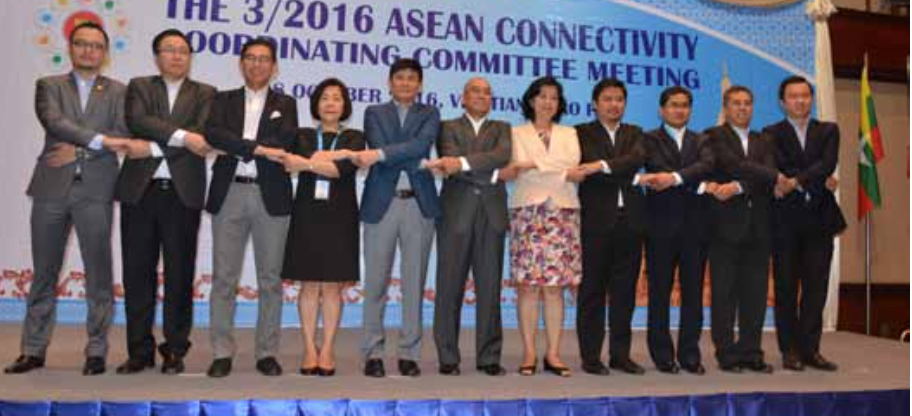ASEAN dialogue partners and delegates gathered in Vientiane yesterday to discuss ways to put the Master Plan on ASEAN Connectivity 2025 (MPAC 2025) into action.
In particular, they considered more effective coordination between sectors, among nations and within the region.
Gathering at the 3/2016 ASEAN Connectivity Coordinating Committee (ACCC) Meeting, ASEAN officials were asked to discuss the implementation of the new master plan.
The delegates also discussed a draft plan of a project to raise funds from dialogue and external partners to implement the new master plan.
Yesterday’s meeting was chaired by the Ambassador and Permanent Representative of Laos to ASEAN, Mr. Latsamy Keomany, who is also Chairman of the ASEAN Connectivity Coordinating Committee this year.
“This meeting is very significant because it is the first event after ASEAN leaders adopted the MPAC 2025 at the 28th ASEAN Summit hosted by Laos last month,” Mr. Latsamy said.
This meeting was the final event under the chairmanship of Laos, who will pass the baton to the Philippines in 2017.
ASEAN leaders adopted the new master plan to boost the development of five strategic areas such as infrastructure, digital innovation and logistics.
The MPAC 2025 succeeds the Master Plan on ASEAN Connectivity 2010 (MPAC 2010), while the remaining initiatives from MPAC 2010 were evaluated and incorporated in the upgraded version.
The new master plan aims to help investors ‘seize opportunities in sustainable infrastructure by improving project preparations, enhancing infrastructure productivity and supporting cities in adopting sustainable practices,’ according to a recent statement from ASEAN.
It will help to establish regulatory frameworks for the delivery of new digital services, support sharing of open data and equip micro, small and medium enterprises with capabilities to access new technologies so as to improve digital technologies, which could be worth up to US$ 625 billion by 2030 in ASEAN, according to report from last month’s ASEAN Summit.
The master plan aims to optimise trade routes in the 10-nation bloc to improve logistics competitiveness so as to ease the movement of goods within the ASEAN community and increase business opportunities for ASEAN citizens.
The plan focuses on standards harmonisation, mutual recognition and technical regulations, as well as trade-distorting non-tariff measures in order to achieve regulatory excellence.
The MPAC 2025 also provides comprehensive information on travel options and simplifying visa application processes since the number of tourists from outside ASEAN could reach 150 million by 2025.
Source: Vientiane Times



